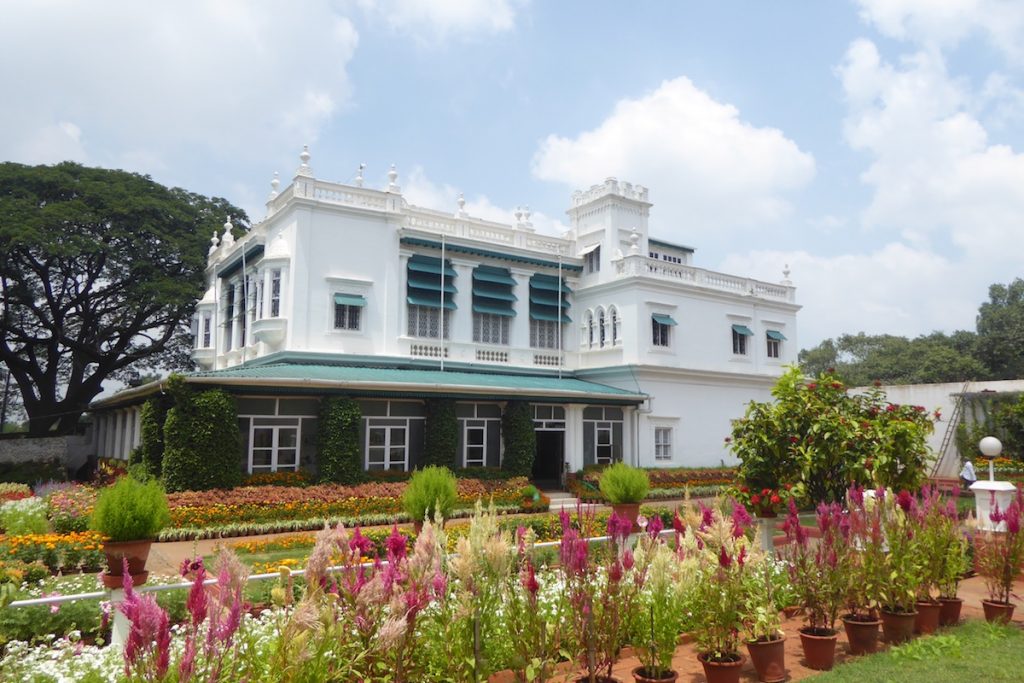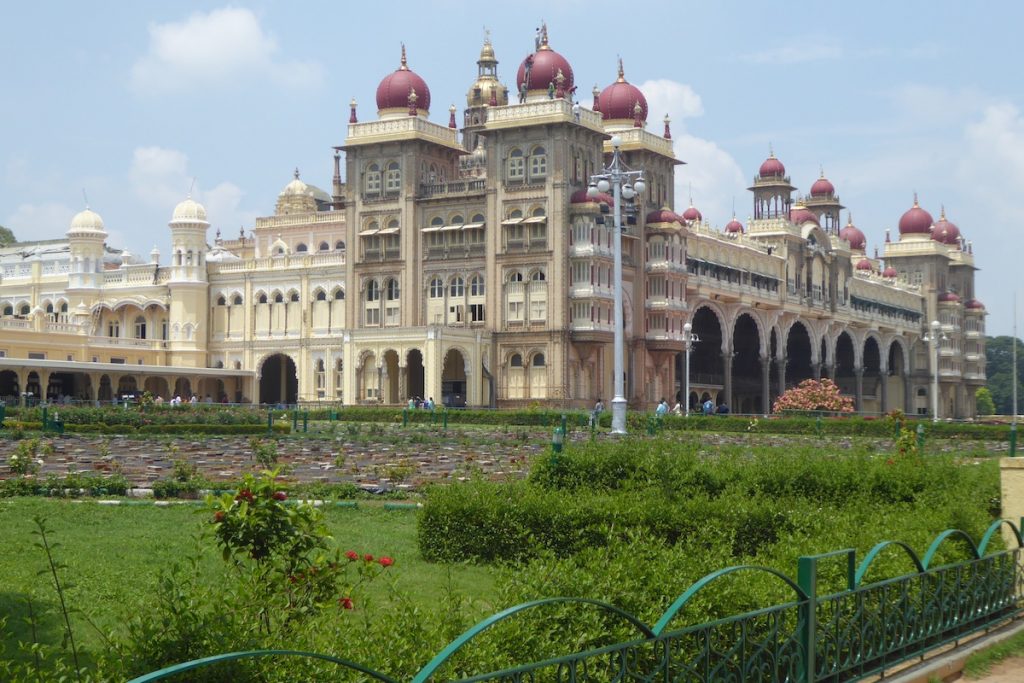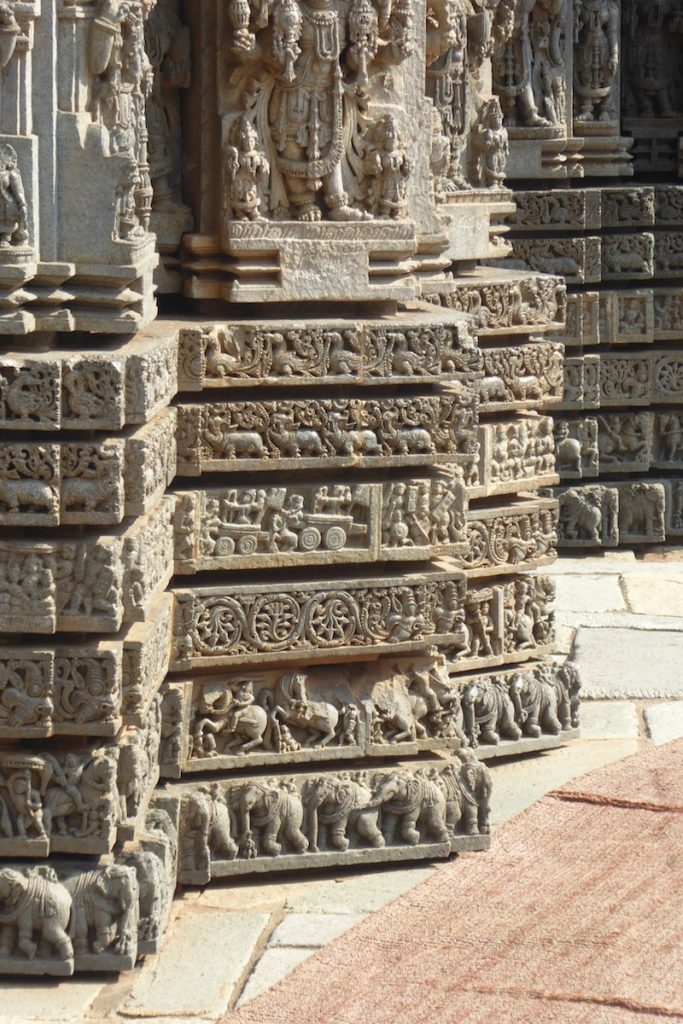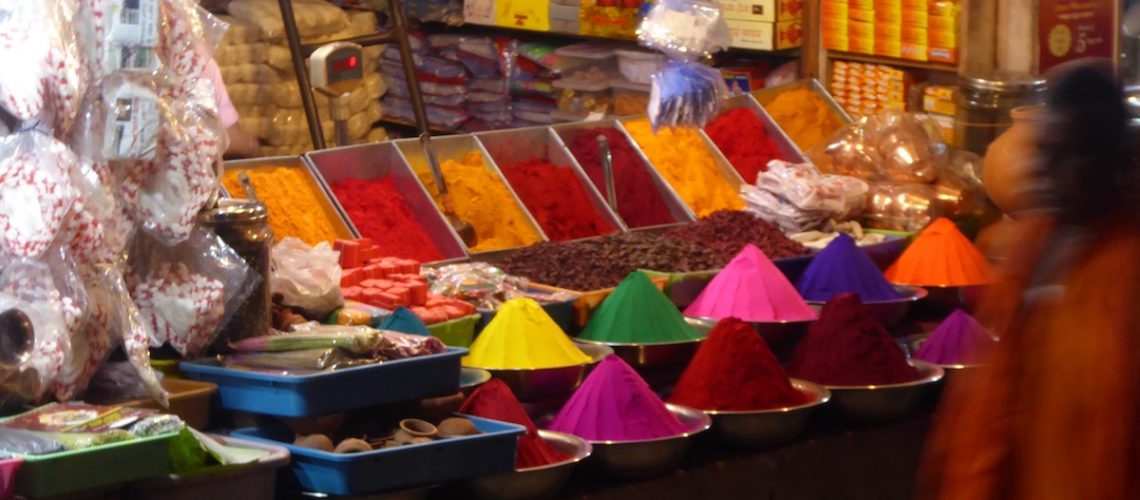Preparations for our Indian leg of our trip started a few weeks before we were planning to touch down.
Filling in the Indian eVisa application online proved to be a slightly frustrating experience. Ambiguous wording, payment sites not working, forensic detail required. And then the worry about it getting processed in time (we’d only given ourselves just over 2 weeks to get them issued). We’d heard horror stories of having to visit the Indian Embassy to collect in person…
All fears unfounded. Both visas issued within 24 hours of submission. First hurdle over…
We had wanted to visit Kerala, but due to the monsoon rains and serious flooding felt that we should reconsider. Cutting a long story short, we decided our first port of call would be Mysuru (formerly Mysore), the city of palaces of which there are seven.
So following our departure from the Seychelles to Mumbai, we booked a connecting flight to Bangaluru then a bus from the airport to Mysuru and a taxi pick up from the bus station. What could possibly go wrong? This is India right? Land of bureaucracy and chaos….
As it happened, all the flights were on time, we were the only people in the ‘eVisa’ queue (processed very efficiently, including storing our biometrics; facial image and thumb prints) and the tickets purchased for the bus meant the conductor was waiting for us when we walked over with our packs.
The road journey (and roads in general) is a different matter, and worthy of its own little post.
Jumping off the bus in Mysuru, immersed us in our first real taste of the melting pot that is India.
However, our driver was there (a deep voiced, hairy gruff fellow who spoke about three words of English) and within a few minutes we entered the sanctity of The Green Hotel.
Firstly a bit about Mysuru.
Mysuru is one of South India’s most famous tourist destinations, known for its glittering royal heritage and magnificent monuments and buildings. Its World Heritage listed palace is what brings most travellers here, but it’s also a thriving centre for the production of premium silk, sandalwood and incense. These days ashtanga yoga is another drawcard as one of India’s best places to practise yoga.
It‘s regal history began in 1399, when the Wodeyar dynasty of Mysuru was founded. Though they remained in service of the Vijayanagar empire until the fall of Vijayanagar in 1565, the Wodeyars then declared their sovereignty, which (apart from a brief period under Hyder Ali and Tipu Sultan in the late 18th century) remained unscathed until Independence in 1947.
But back to The Green Hotel.
Built as the Chittaranjan Palace in the 1920s by the maharajah for his three daughters, it’s life as a palace transformed into another as a film studio and ultimately a hotel. Run on solar energy, all profits are put back into charities and green projects across India. Alongside the rooms, it offers a restaurant where you can eat dinner by candlelight in the evening on the lawns surrounded by beautifully manicured flower beds and some two and a half thousand pots.

The restaurant is renowned in Mysuru, as can be testified by the number of Indian groups and families eating there, and is also great value. Dinner for two plus water and a couple of soft drinks (they had an issue with their liquor license when we were there) costing about 1,000R (£10 approximately). Oh, and it was delicious. We tried a number of different local dishes (hyderabadi, tikka, rogan josh, biryani and a range of vegetable dishes. The breads, freshly made were to die for).
The room? Functional, but for less than £25 per night (inc. breakfast) to stay in such a place it was good value.
Helen, inspired by the hotel’s movie heritage, has produced a short clip showing you around the hotel that you can take a look at below.
First day.
We thought we’d visit the world famous Mysuru Palace. The hotel has a resident auto-rickshaw driver associated with it, so we asked for a lift, jumped in and zoomed (?) off.
When we arrived, Lokesh (the driver) asked if we wanted him to take us around for the day so we agreed a price and headed into the palace.

This fantastic palace was the former seat of the Wodeyar maharajas. The old palace was gutted by fire in 1897, the current one completed in 1912 by English architect Henry Irwin. The interior (like the whole building) is lavish and over the top. The decor is embellished by carved wooden doors, mosaic floors and a series of paintings depicting life in Mysore during the Edwardian Raj era. The palace is illuminated every Sunday and public holiday by nearly 100,000 light bulbs that accentuate its lavishness.
The first bizarre thing that happened when we went into the grounds is that a group of girls, teenagers, asked to have selfies with us. (It wasn’t an isolated incident either, we had families, teenage boys and a group of middle age men all ask to have selfies with us. What on earth?)
Outside is quite a spectacle, so with shoes left outside (compulsory when entering religious buildings and good manners on entering into people’s homes), and with warnings of ‘no photos’ inside, we went in. Every man woman and dog had phones and cameras snapping away, so we forgot that and wandered around.
Opulent grandeur is probably the most appropriate phrase.
As we were now on a bit of a timetable, we didn’t dally and headed back to our rendezvous with Lokesh.
Next stop, Chumundi Hill. 1062m high, and offering views of the city, on the summit of which stands the Sri Chamundeswari Temple dominated by a towering 40m-high gopuram (gateway tower). We arrived at lunchtime when it was closed so we wandered around (tourist market and a couple of other smaller temples). We then headed down some 300 steps, to a 5m high statue of Nandi (Shiva’s bull) that was carved out of solid rock in 1659, where we were to meet Lokesh.
Next, to the Lalitha Mahal Palace for coffee and cake. It’s a former maharaja’s guesthouse built in 1921, now operating as an hotel.
Off to a silk emporium (where you can get a silk dress made) to ‘just look a some silk’ and then to the Devaraja Market.
Dating from Tipu Sultan’s reign, this huge and lively bazaar has local traders selling diverse thing from fruit and vegetables to hardware, alongside traditional items such as flower garlands, spices and conical piles of kumkum (the coloured powder used for bindi dots). Again, this warrants a post of is own.
By the time we leave to head back in the rickshaw it’s dark. A fun, frenetic and interesting first day in India, completed by a curry on the lawn at the hotel.
Second day.
Booking more accommodation, flights, and trains (through Seagull Travel, the local affiliated agents coined by Helen as ‘Dumb and Dumber’ as I had to tell them which trains and seats were available…).
Third day.
We booked a trip through Seagull as we wanted to cover more ground and felt a car would be better than a rickshaw out of town.
First stop, the island of Srirangapatnam, a fort town, 16km from Mysuru. It’s built on an island straddling the Cauvery River and was the seat of Hyder Ali and Tipu Sultan’s power. In fact, this town was the de facto capital of much of southern India during the 18th century until its glory days were ended when the British waged an epic war against Tipu Sultan in 1799 when he was defeated and killed. The ramparts, battlements and some of the gates of the fort still stand, as do a clutch of monuments.
Sri Ranganathaswamy Temple
A Hindu temple, and as we were in the run up to a festival for Vishnu, a very busy one. We queued for an hour to get in, but did witness the dedication of these devout people, with old and young alike waiting to pray and make their offerings. We didn’t see another white face in the temple, and personally I found myself wondering how I should act once I reached the main idol and holy man. I think the worshippers were generally happy for us to be there, and we were encouraged more than once to stick with the queue and to enter the most holy parts of their temple. People clearly proud of their faith.
Colonel Bailey’s Dungeon
An 18th century dungeon where British prisoners were held, officers chained to the walls and where Colonel Bailey himself died.
Daria Daulat Bagh (Tipu Sultan’s Summer Palace)
Set within (supposedly) lovely manicured grounds. Built largely out of teak, the palace doesn’t look like much from the outside, but inside, the ceilings are embellished with floral designs, while the walls bear murals depicting courtly life and Tipu’s campaigns against the British.
Gumbaz (Tipu Sultan’s Mausoleum )
Located within serene gardens, the historically significant Gumbaz is the resting place of the legendary Tipu Sultan, his equally famed father, Hyder Ali, and his wife. Situated alongside the mausoleum is the Jamia Masjid mosque built by the sultan in 1787.

Next stop, away from Srirangapatnam, was Somnathpur, a beautiful Keshava Temple which is purported to be one of the finest examples of Hoysala architecture, and on a par with the masterpieces of Belur and Halebid. Built in AD 1268, this star-shaped temple, has beautifully intricate stone sculptures and carvings depicting scenes from the Ramayana, Mahabharata and Bhagavad Gita, and the life and times of the Hoysala kings. Looking at the detail and craftsmanship, you wonder how many years or decades something like this would have taken to complete.
After that back to Mysuru for the highlight of the day. Ditch the car (and our old friend the gruff driver with four words of English – he’d learned ‘paddy” since we’d last met), pick up train tickets, find Lokesh and head off to collect Helen’s new silk dress. Woo hoo!!!
And then the real highlight of the day…
Dropped off near the Palace we had dinner, (Chinese for a change, but still only 1,200R inc. a 1.5l pitcher of Kingfisher) then walked over to the Mysuru Palace to see the illuminations, and spectacular they are, the main palace, gopurams and gates all shining spectacularly. Thousands of people filled the grounds, all in awe of the spectacle surrounding them. To add a little extra, elephants were lined up in front of the palace, and a veteran car rally had ended there with some fine old British and European sports cars, (Jags, Mercs, Alfas…) and a range of 50s American monsters.
After the crowds started to drift away we jumped into a rickshaw (we’d said farewell to Lokesh earlier) just as the heavens opened to head back to the hotel.
I was slightly sceptical about the whole illuminations ‘thing’ but it was genuinely spectacular. And enjoyed by tourists from around the world as well as local spectators. It made a fabulous and memorable end to our Mysuru stay.
The next morning we were booked onto the 5:30am train to Hosapete in the morning to visit the world famous and historic site of Hampi. Somewhere that most people have never even heard of…
Footnote:
I’d been to India before, but it was Helen’s first visit. First impressions are of dust & dirt, rubbish everywhere, noise, people, stray dogs and chaos. And cows.
Look beneath the surface though, and there’s something else there. There’s a vibrancy.
The women’s saris create a kaleidoscope of colour. And in the markets the smell of aromatic herbs, incense, spices and the fragrance of jasmine and rose from the sacks of flowers the ladies use to make garlands fill the air.
And above all the people. There are smiles all around. The children run up and shake your hand. Indians are proud of their country and their culture and they want to share that.

5 thoughts on “Into India 🇮🇳”
You did such an amazing job explaining the beauty and chaos of India. Those last pictures are breathtaking….I need to go back and see it again.
Hi
Thanks. It’s such an amazing place, and such a place of contradiction.
We’ve been to Hampi since Mysuru (think you’d love it there) and on to Delhi Monday. Joining another trip around Rajasthan… Will post some more soon…
Loved reading this Jon, keep up the writing and videos! Pictures look amazing. India is another world and perhaps worth a visit one day after all.
Sounded fab and the pictures are amazing. Another place on the bucket list!
Loved Helen’s guided tour. ? xx
Great blog! Brought back some wonderful memories, thank- you. Hilary